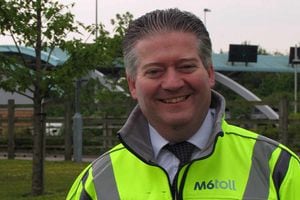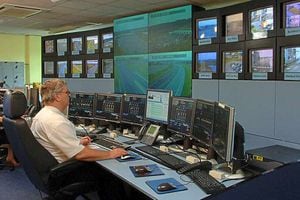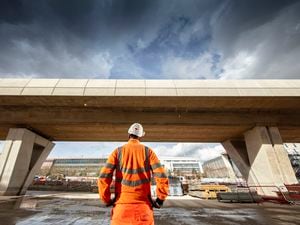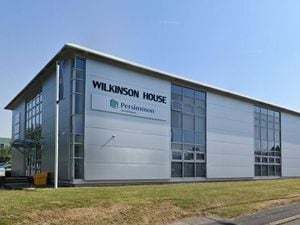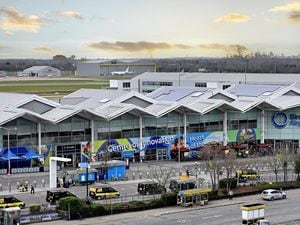What does the future have in store for the M6 Toll?
It is the most controversial stretch of road in the UK, frequently criticised for its perceived high fees, under usage and a failure to reduce congestion on nearby routes.
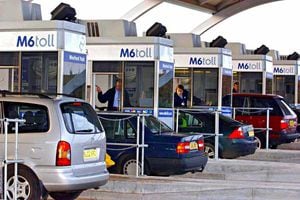
The £900 million M6 Toll opened up 13 years ago as the country's first pay-as-you-go motorway, dubbed as a congestion free route through the heart of the West Midlands.
But while traffic continued to grow on the M6, the toll gained a reputation in some quarters for being overpriced and under used, its often empty highways characterising its failure.
It led to many people asking whether there was any point in building the motorway, which runs for 27 miles between Cannock and Coleshill in Warwickshire.
But according to the chief executive of Midland Expressway, the 'empty road' theory is just one of a number of myths he has been trying to explode since he took up post 10 months ago.
Andy Pearson has travelled the world working with private investors to develop manufacturing opportunities, but his current role poses a whole new set of challenges.
"There has been a lobby against the M6 Toll that has been very vocal and unfortunately that has helped to push myths that have not shone a good light on us," he said.
"From my perspective it is very simple: the toll works. Our users agree. And it is up to us to try and put across our own views."
A major part of the problem is a misreading of the very purpose of the toll, according to Mr Pearson.
He says that from its inception the main aim was never simply to take traffic from the M6, as the M6 Toll was designed as a congestion relief road for through traffic to completely avoid Birmingham.
"There is a subtle difference," he said.
"When you look at usage figures it is clear there was never going to be a situation where the M6 Toll could solve congestion on the M6.
"The M6 delivers traffic that comes on and off the motorway in and around Birmingham. When traffic doesn't use the M6 because of an accident or whatever it adds to congestion on local roads like the A38.
"The bottom line is that we can't help the M6."
Indeed the vast majority - 70 per cent - of traffic on the M6 Toll is through traffic, that is traffic that passes along the entire stretch of the motorway.
The number of toll road users that join and leave the road at some point within its 27 mile length is minimal, compared to around 80 per cent of traffic that enters or leaves the M6 in the West Midlands.
It is why Mr Pearson argues that when you look at the original remit of the M6 Toll the route has been anything but a failure.
Usage figures on the route have grown by at least 10 per cent in each of the last four years. In 2015 a total of 17.4m vehicles used the M6 Toll, up 12.6 per cent on the previous year.
A total of 47,600 vehicles a day passed along the toll route in 2015, 11,600 up on 2012. Mr Pearson said: "We are often saddled with having a target of 72,000 vehicles a day but this was never actually a target.
"That figure was the original design capacity and has frequently been misquoted by those who want to brand us as a failure."
Toll roads have long been a point of contention in the UK, with opposition to the M6 Toll building up almost from the moment the scheme was given the go ahead following a second public inquiry in 1997.
The National Alliance Against Tolls has been particularly vocal in urging the government to buy the motorway and remove the charge to reduce congestion. South Staffordshire MP Gavin Williamson has also called for the route to be nationalised.
"There will always be opposition to toll roads," Mr Pearson said.
"They are a feature of all emerging countries, France and Italy have thousands of miles of tolls. There is a view in Britain that roads should be paid for out of our taxes, but we are where we are. Our growth shows that a significant number of people do accept tolls."
The motorway has also come under fire for its fees. It currently charges cars £5.50 and lorries £11, with fees frozen for the past four years.
Mr Pearson said: "This is a private enterprise and it is up to us to charge a toll that enable us to make money and provide an excellent service.
"We only get a handful of complaints each month and our customer base is growing. That doesn't look to me like a business that has got its figures wrong.
"In fact we often hear from people asking us not to decrease the toll. There's a fear that it might get too busy, but we could easily handle double the traffic we have now without congestion becoming an issue.
"We have nurses, doctors and school teachers using the toll. This is not a rich persons road."
Mr Pearson admits that the route was hit hard by the economic downturn that saw it re-financed in 2006 and restructured again over the last two years.
He describes the recessions as 'a real problem for our business', but says the toll has been 'cash positive' from its inception.
Earlier this year it was put up for sale by the group of 27 banks that own it for a figure believed to be around £2 billion.
"It is precisely because it is doing so well that makes this an ideal time to sell," Mr Pearson said.
"The current owners want to be lenders, rather than owners. That is their business. They consider it to be a good time to sell.
"It is very early days and there has been lots of interest, but nothing of consequence has happened yet."
